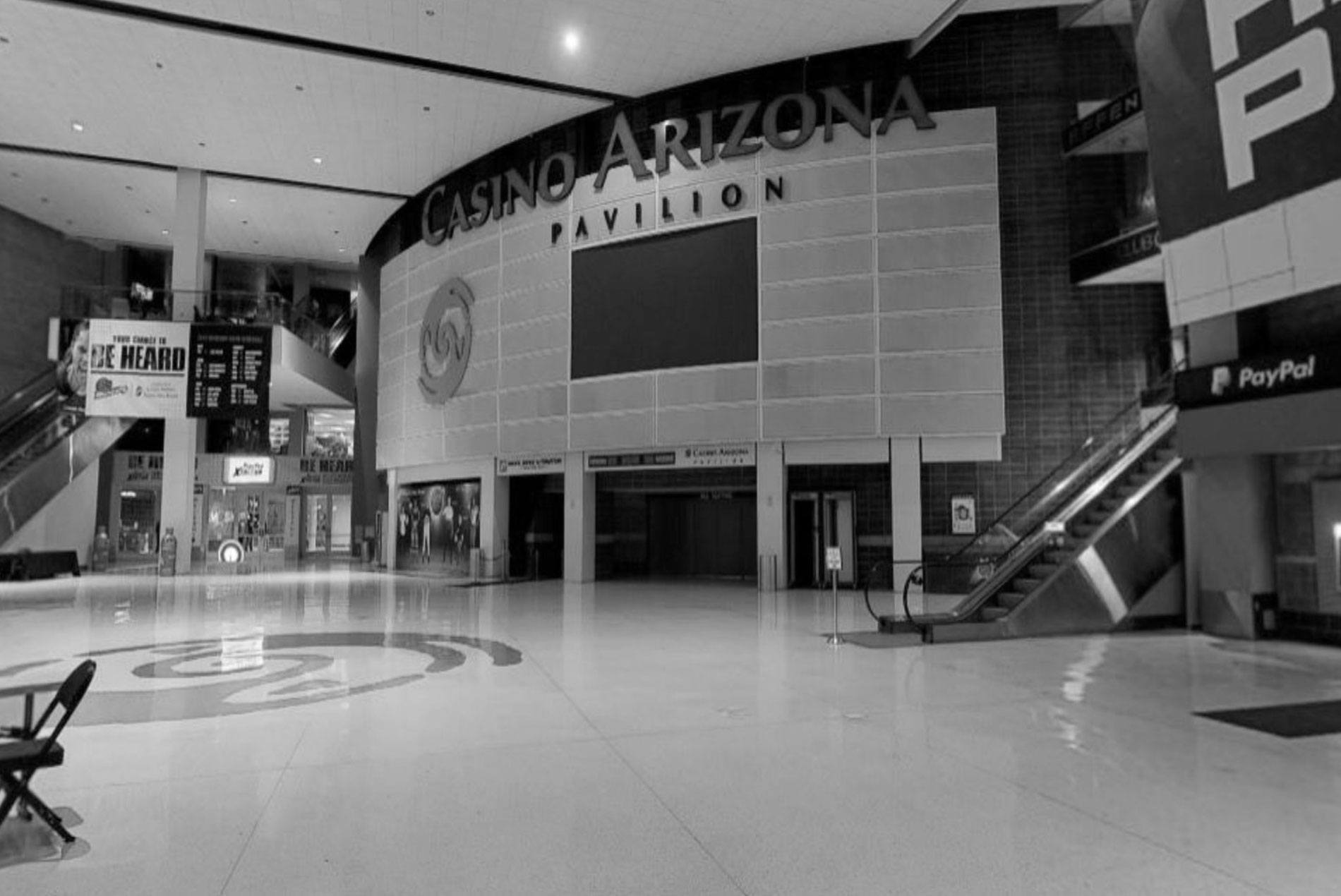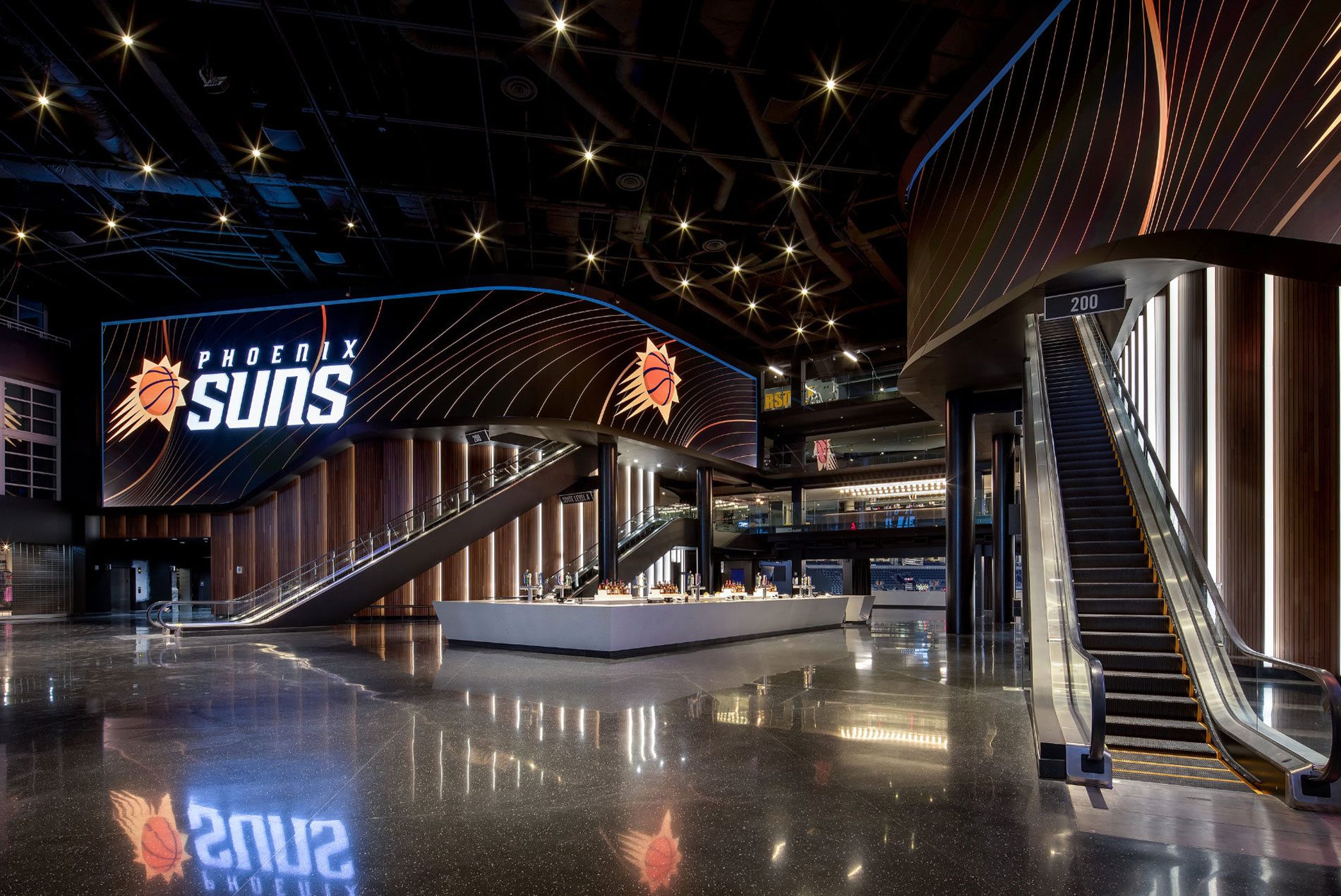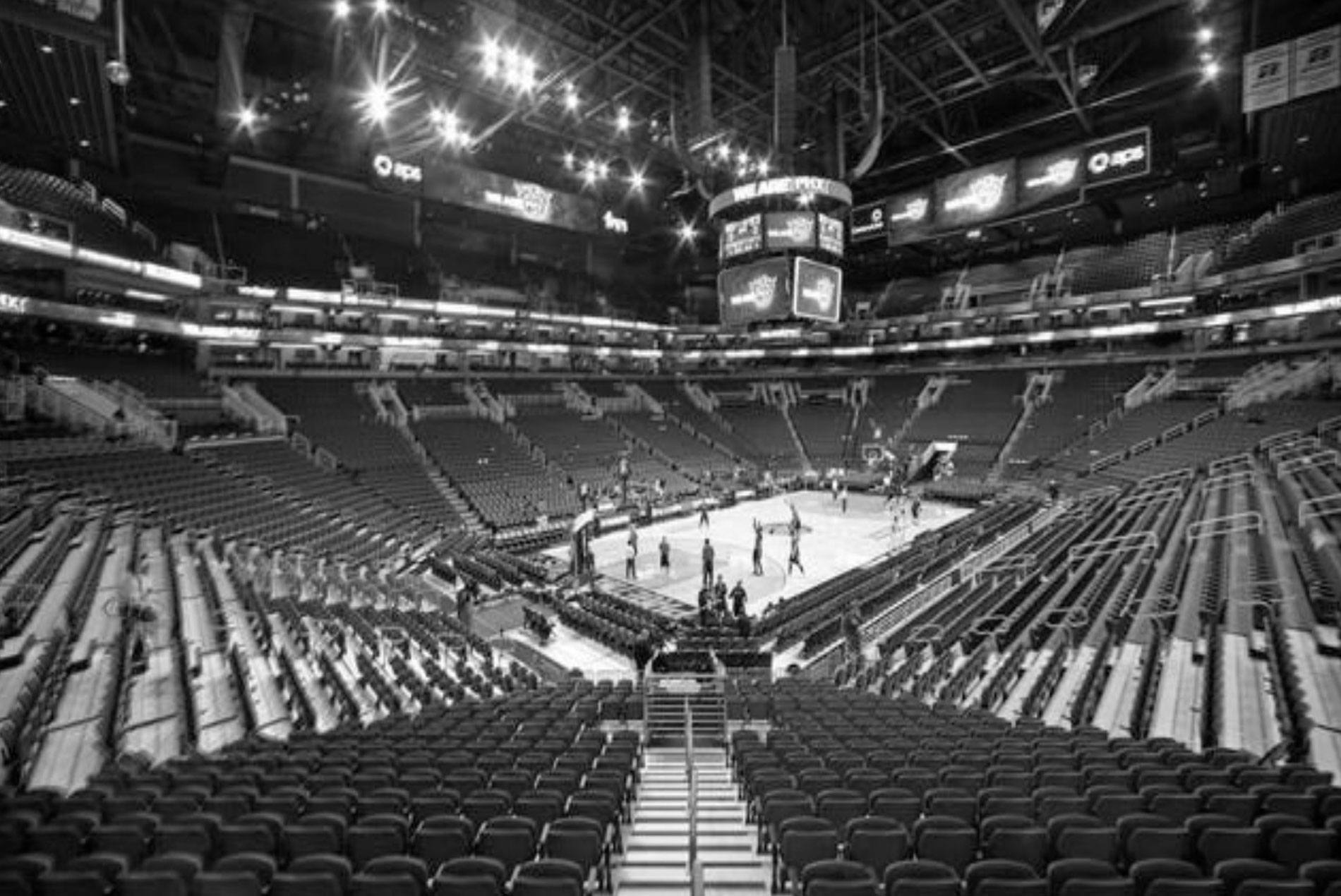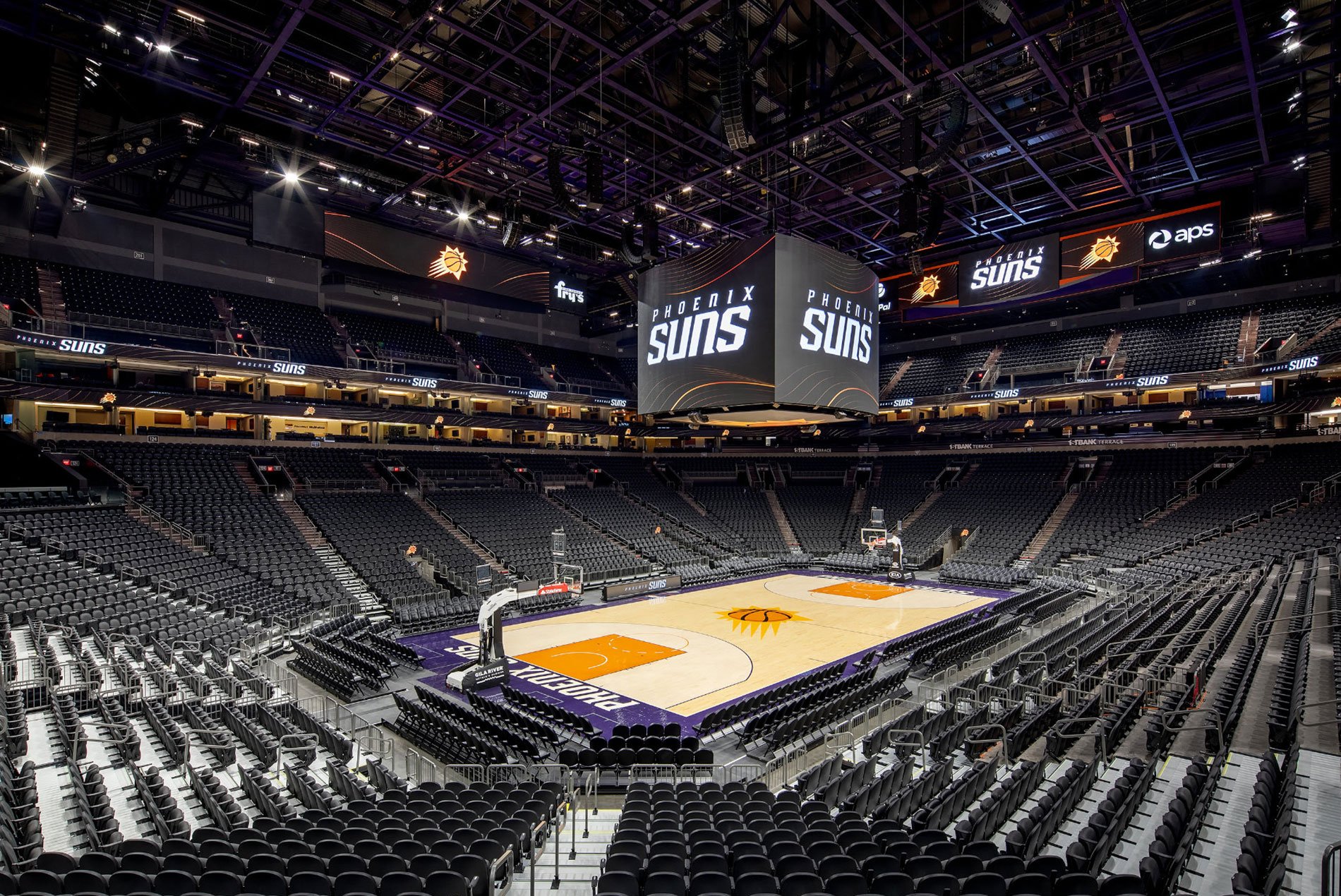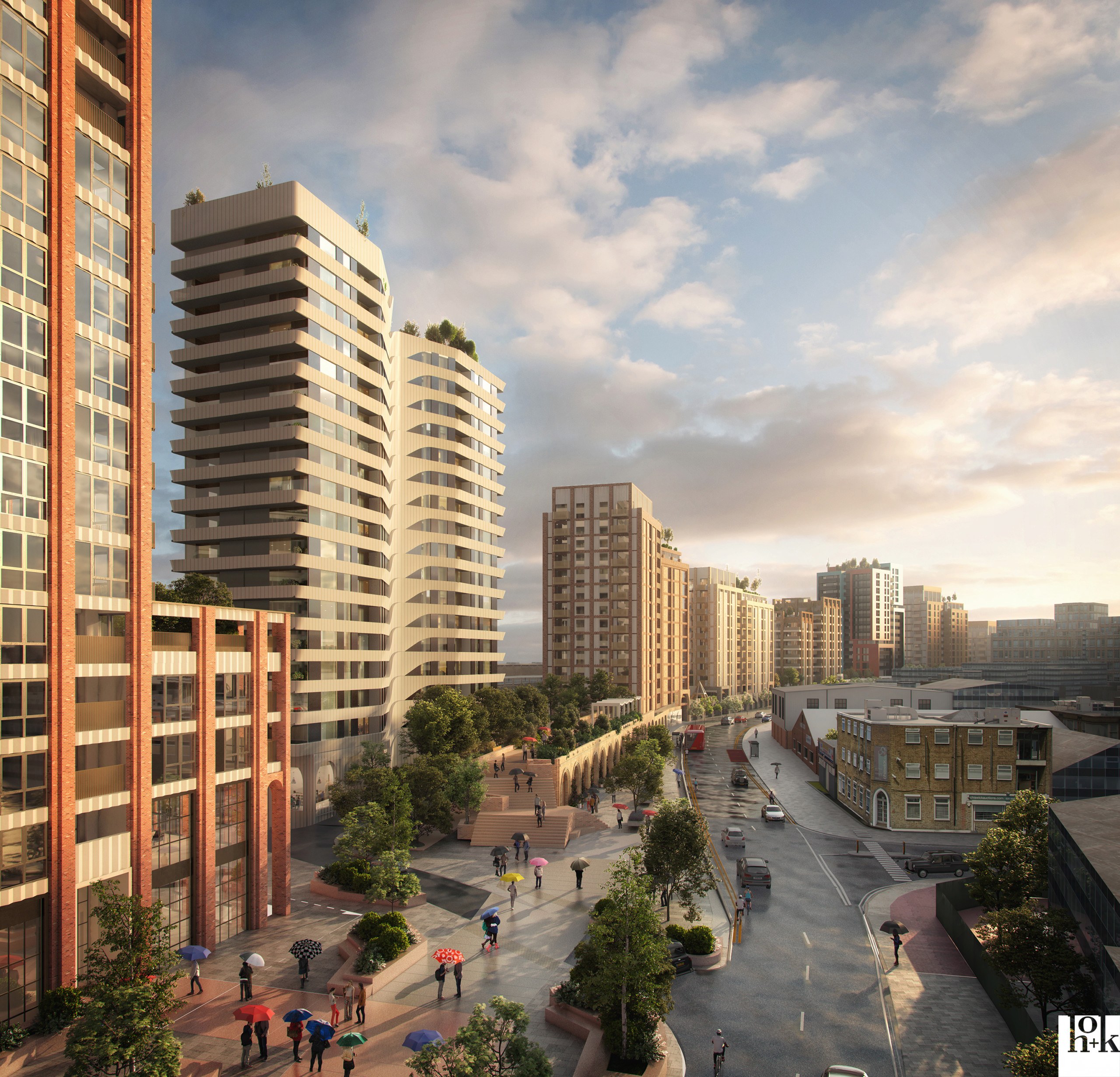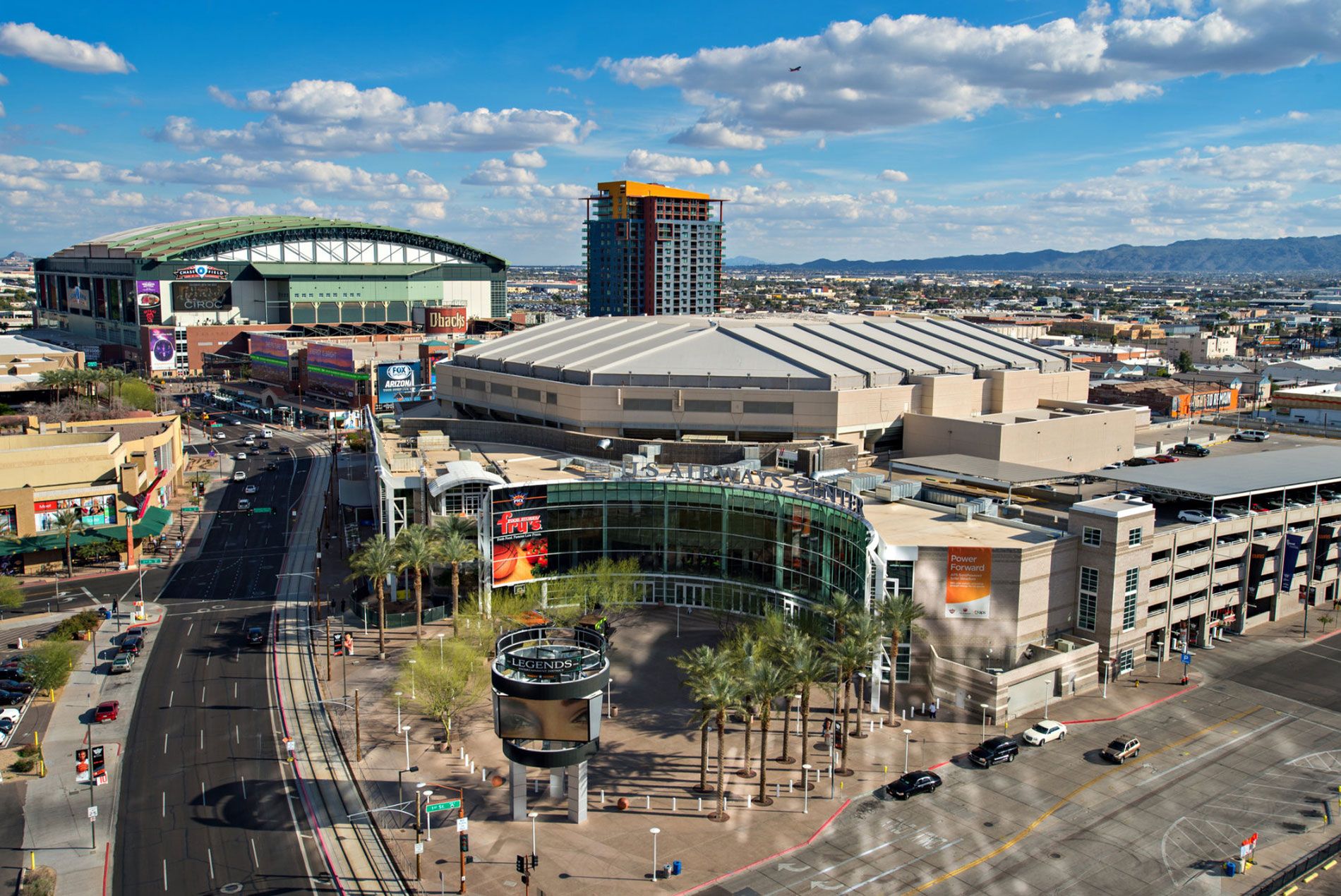
Over the last three decades, this fast-growing city has built up around the original arena, which opened in 1992.
The venue now anchors the southern edge of Phoenix’s central business district, with easy access to two nearby light rail stations and Chase Field, the ballpark for Major League Baseball’s Arizona Diamondbacks.
This prime location and the unique intimacy of the basketball-first seating bowl influenced the Suns’ decision to renovate the arena instead of building new. As did the project cost, which was about half of what they would have paid for new construction.
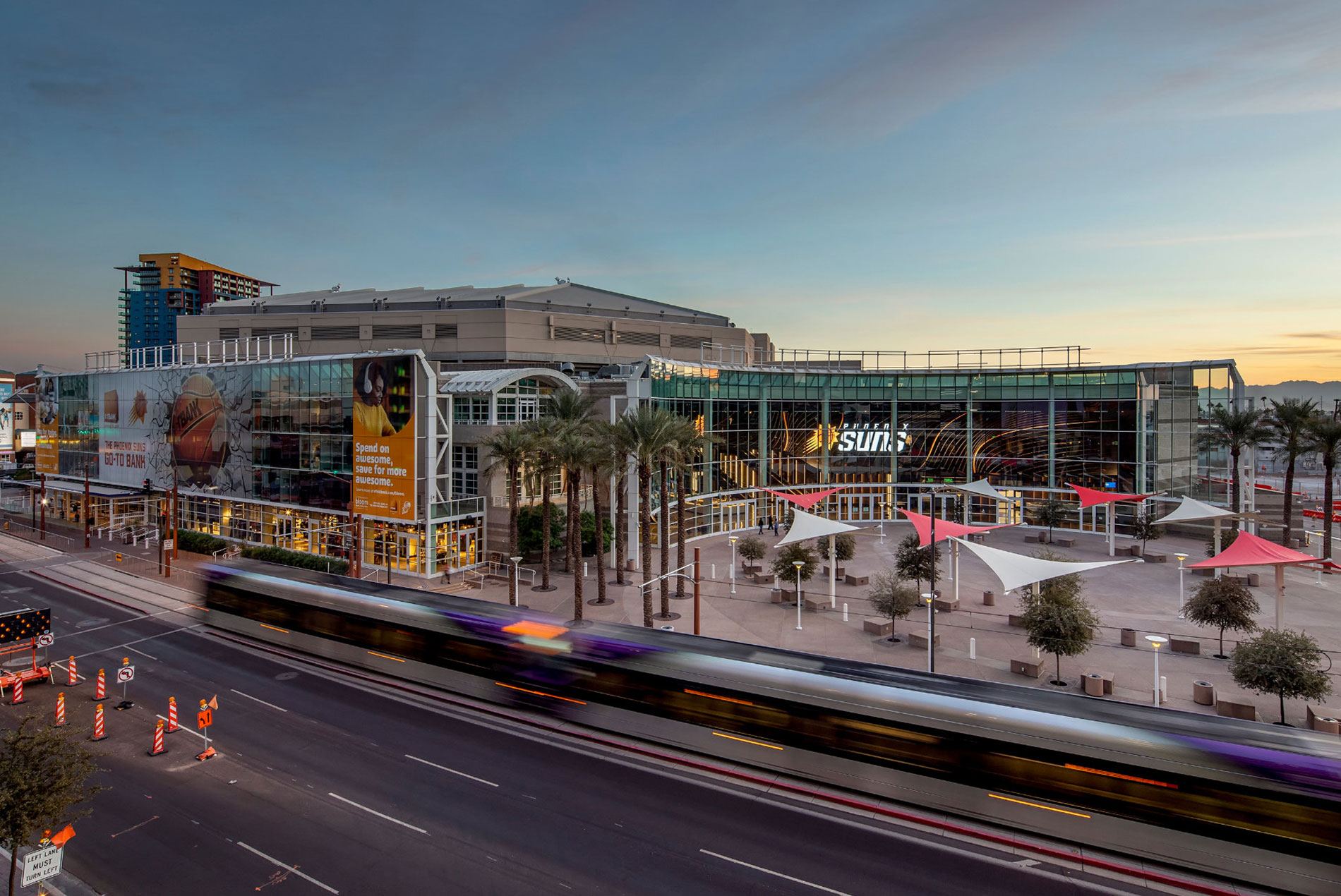
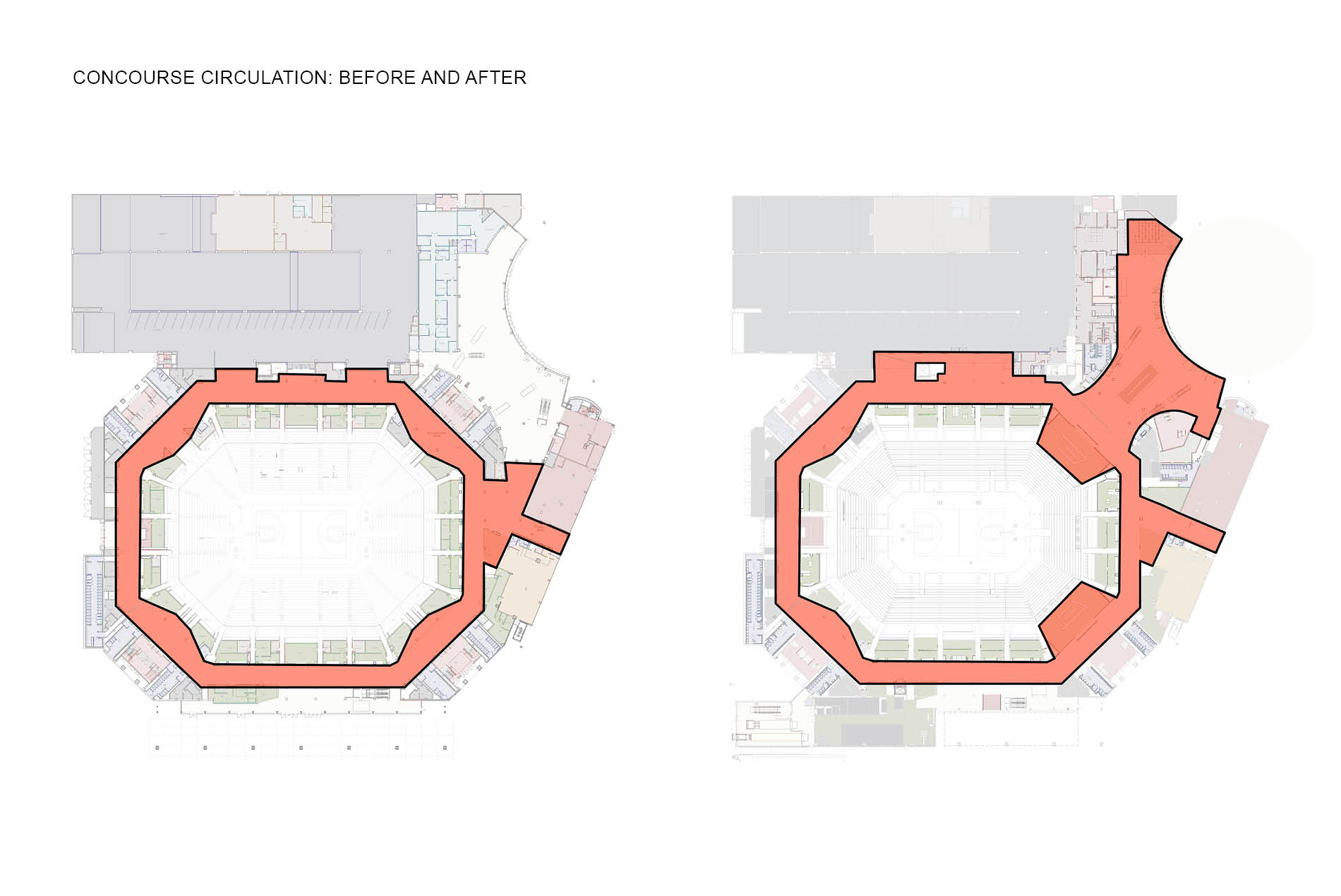
Though renovations typically are more sustainable and cost effective, they can be complex. For the design team, the multidimensional challenges included widening the concourses, infusing new amenities and creating a sense of transparency and openness in the antiquated building.
By relocating 4,000 square feet of space from the arena into a standalone new practice facility outside downtown, the Suns freed the designers to transform the event level with new amenities.
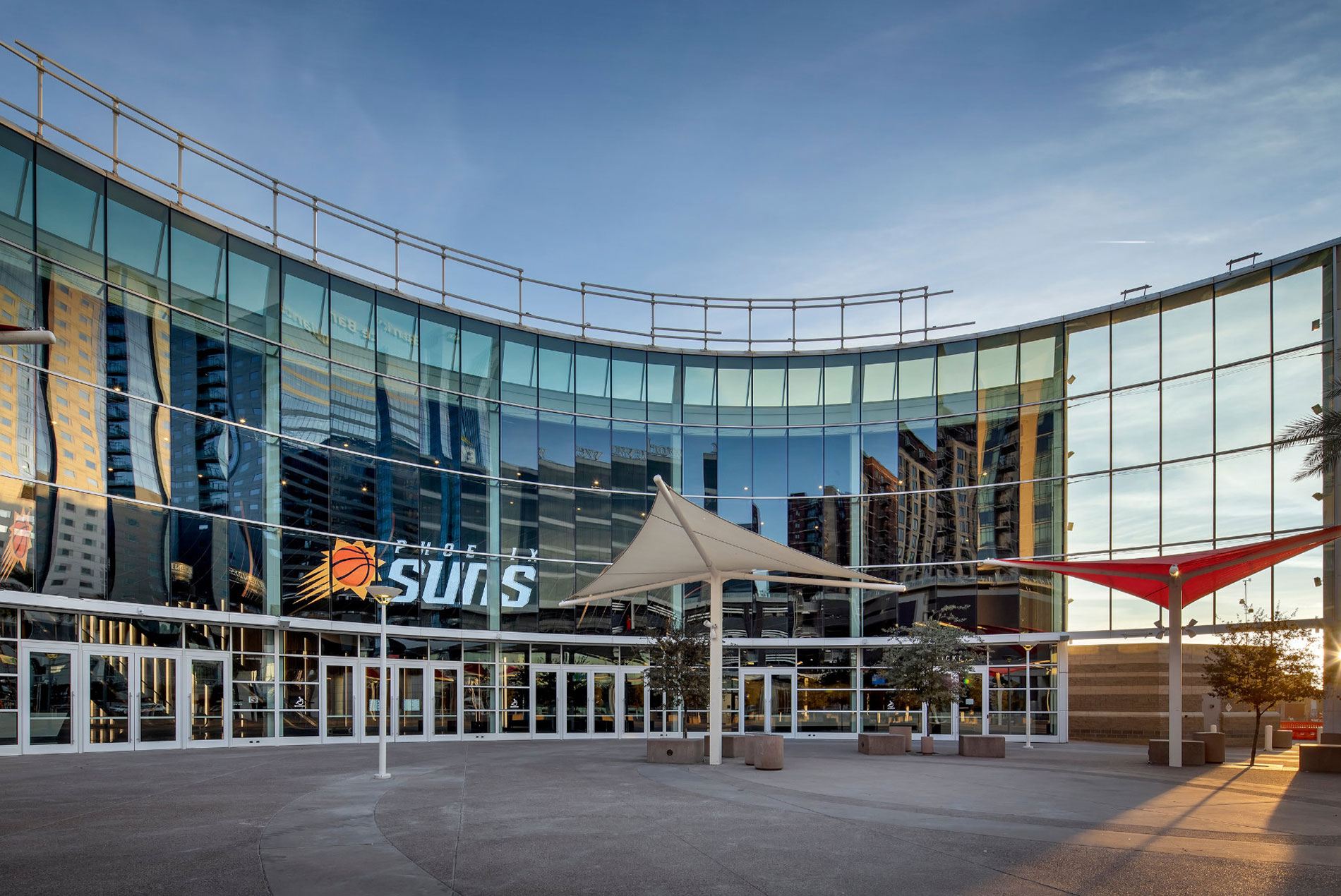
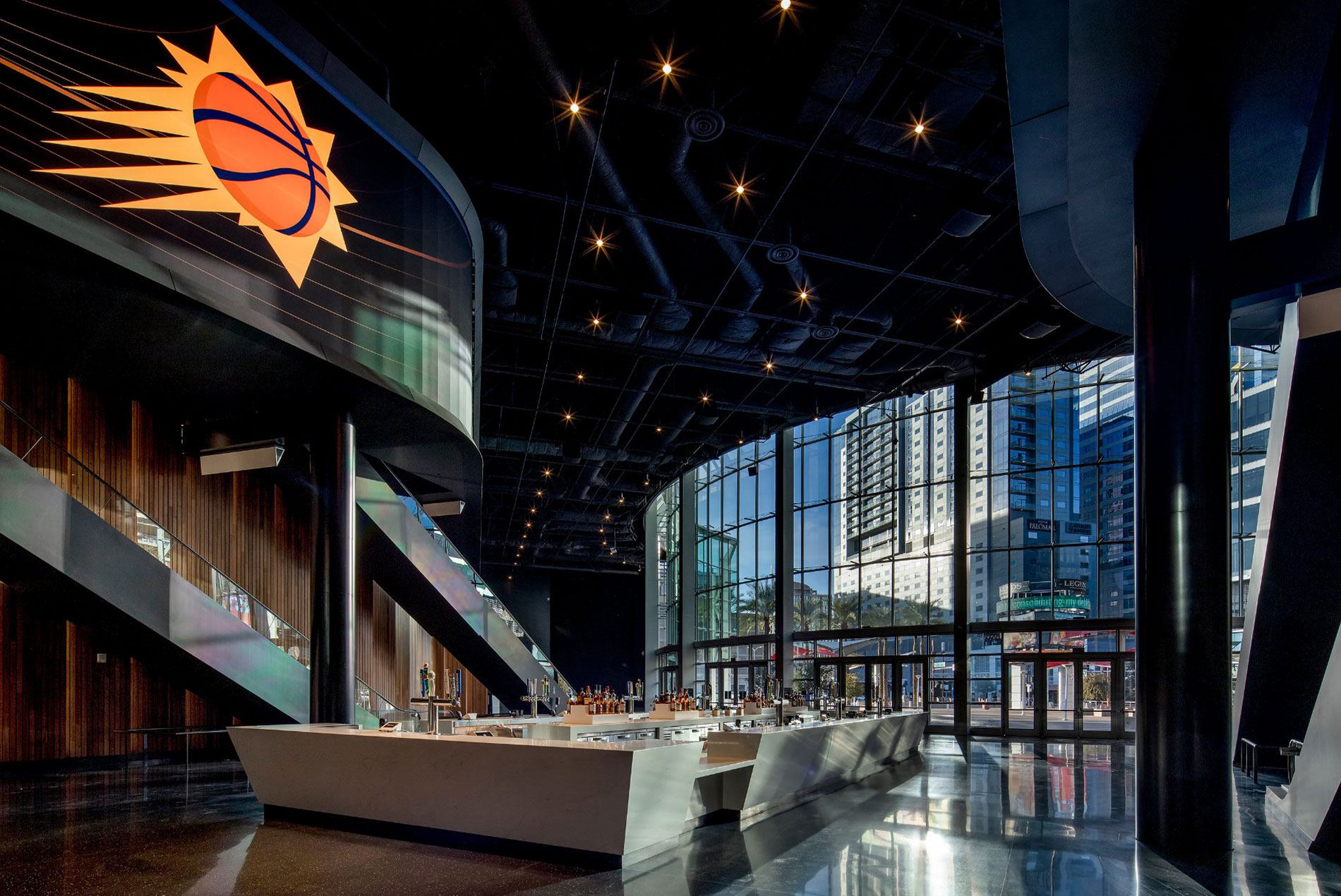
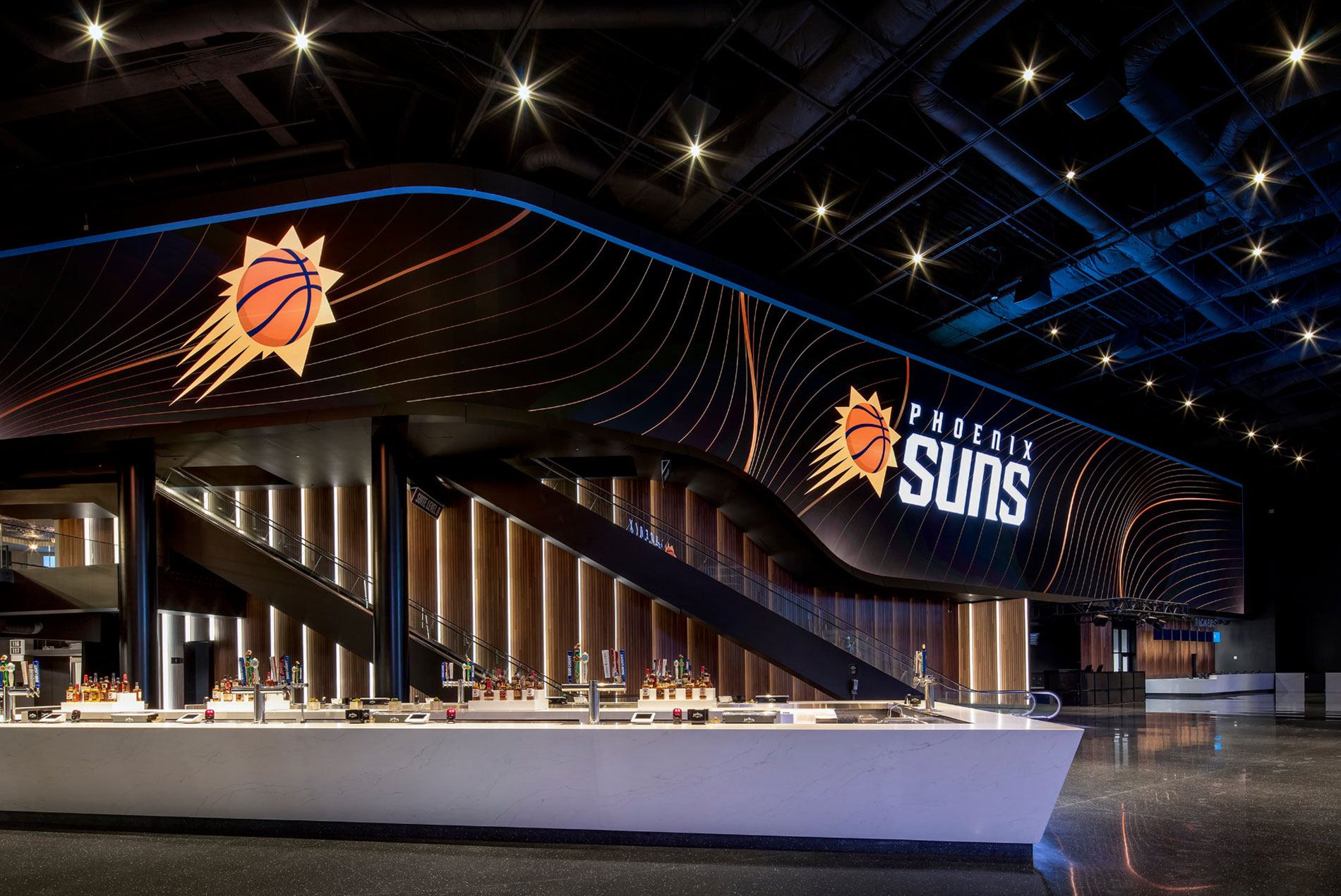
The lobby offers a sense of grandeur with America’s largest sports bar, direct views into the seating bowl and an immersive 8,500-sq.-ft. LED video board that serves as a beacon of light and energy.
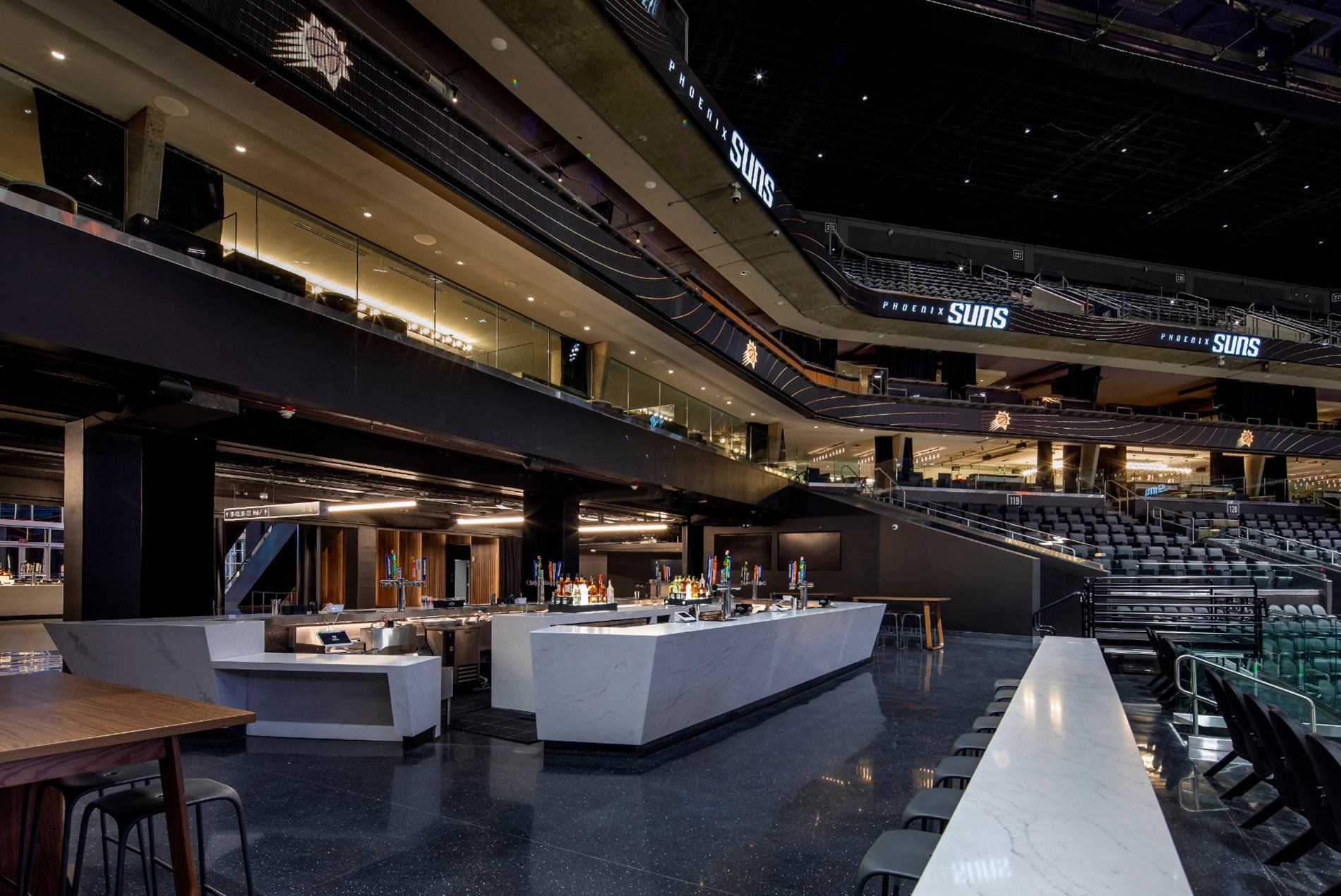
By removing the stair tower and reducing seating in two corners of the lower bowl, the design improved sightlines and widened circulation, allowing for new in-bowl features.
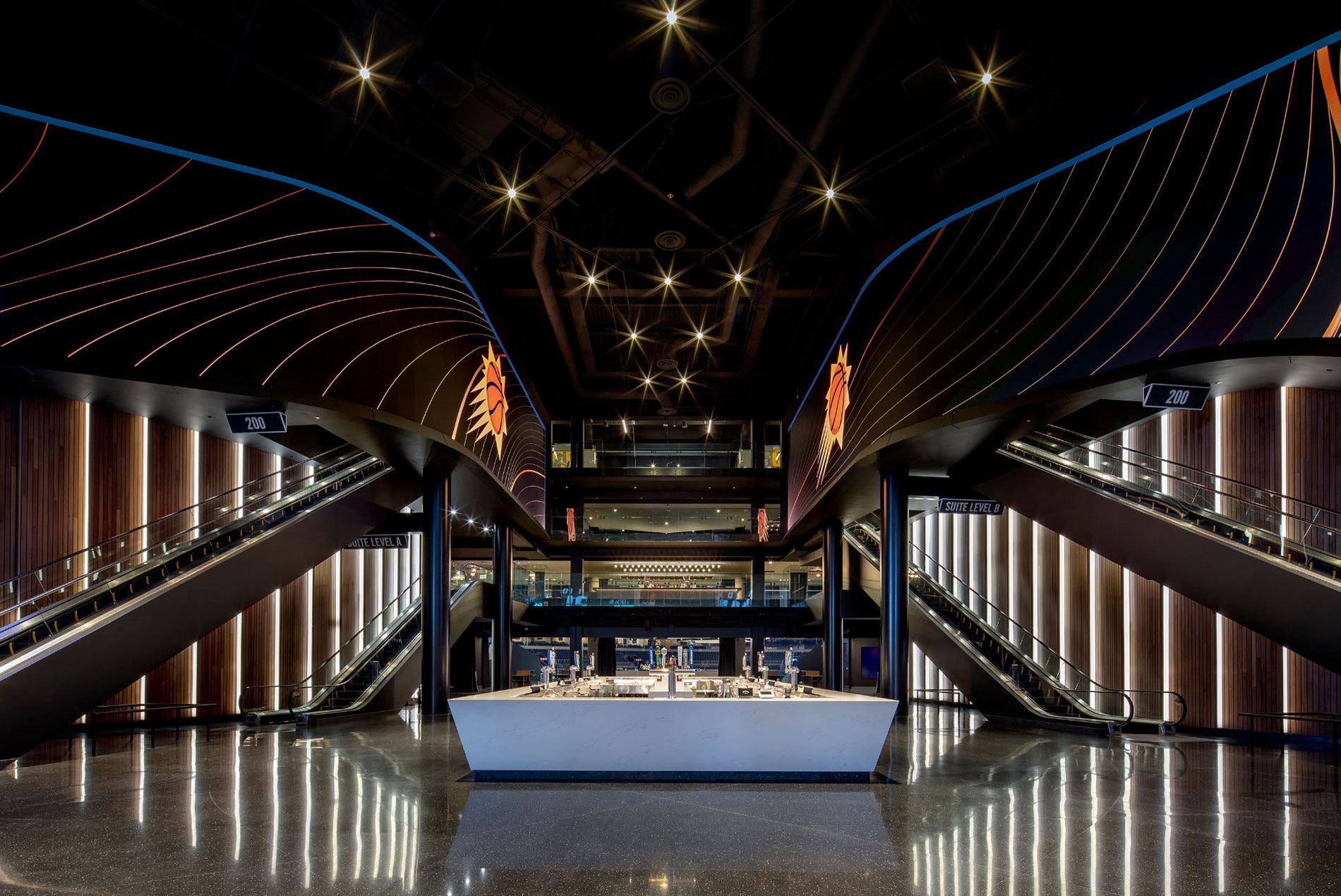
Thirty years ago, most sports and entertainment venues featured the same type of repetitive premium offerings. That’s no longer true.
Many of today’s fans are as focused on the social experience as the game itself. The goal of designing a premium fan experience—including bars, clubs and suites—offered an opportunity to embed rich socialization opportunities and first-class amenities.
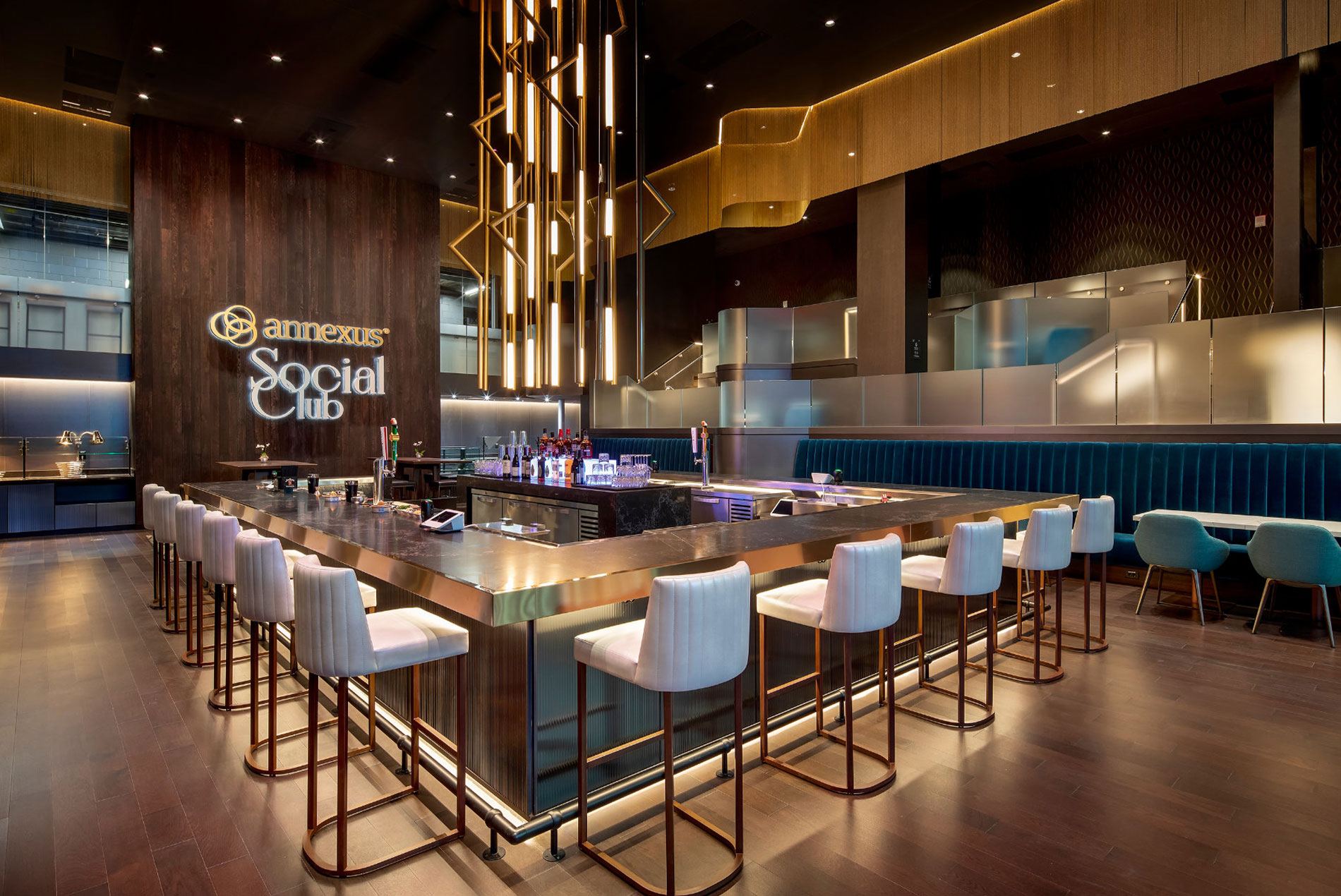
“We wanted to accommodate the emerging socialization of sport.”
— Bill Johnson, HOK Design Principal
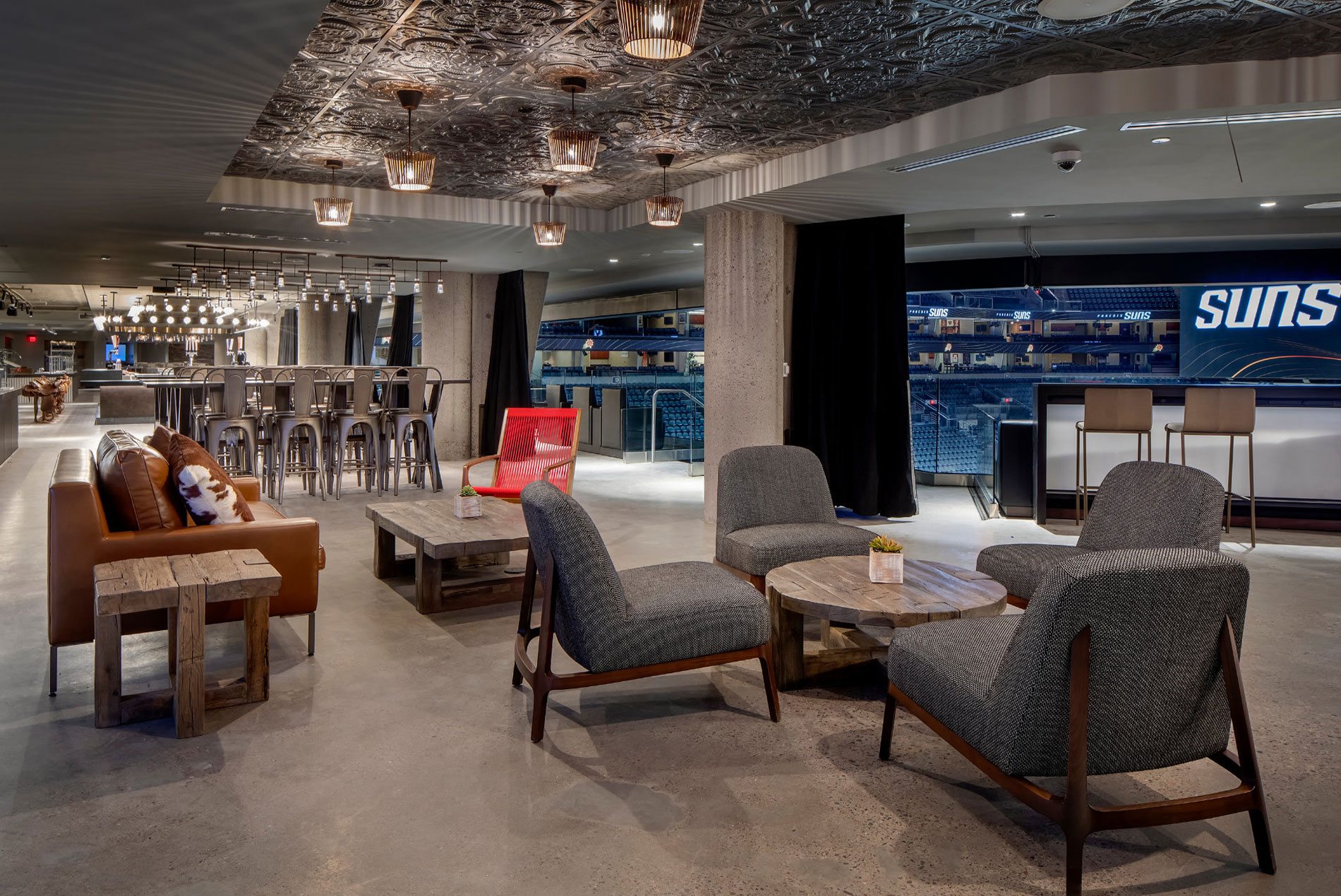
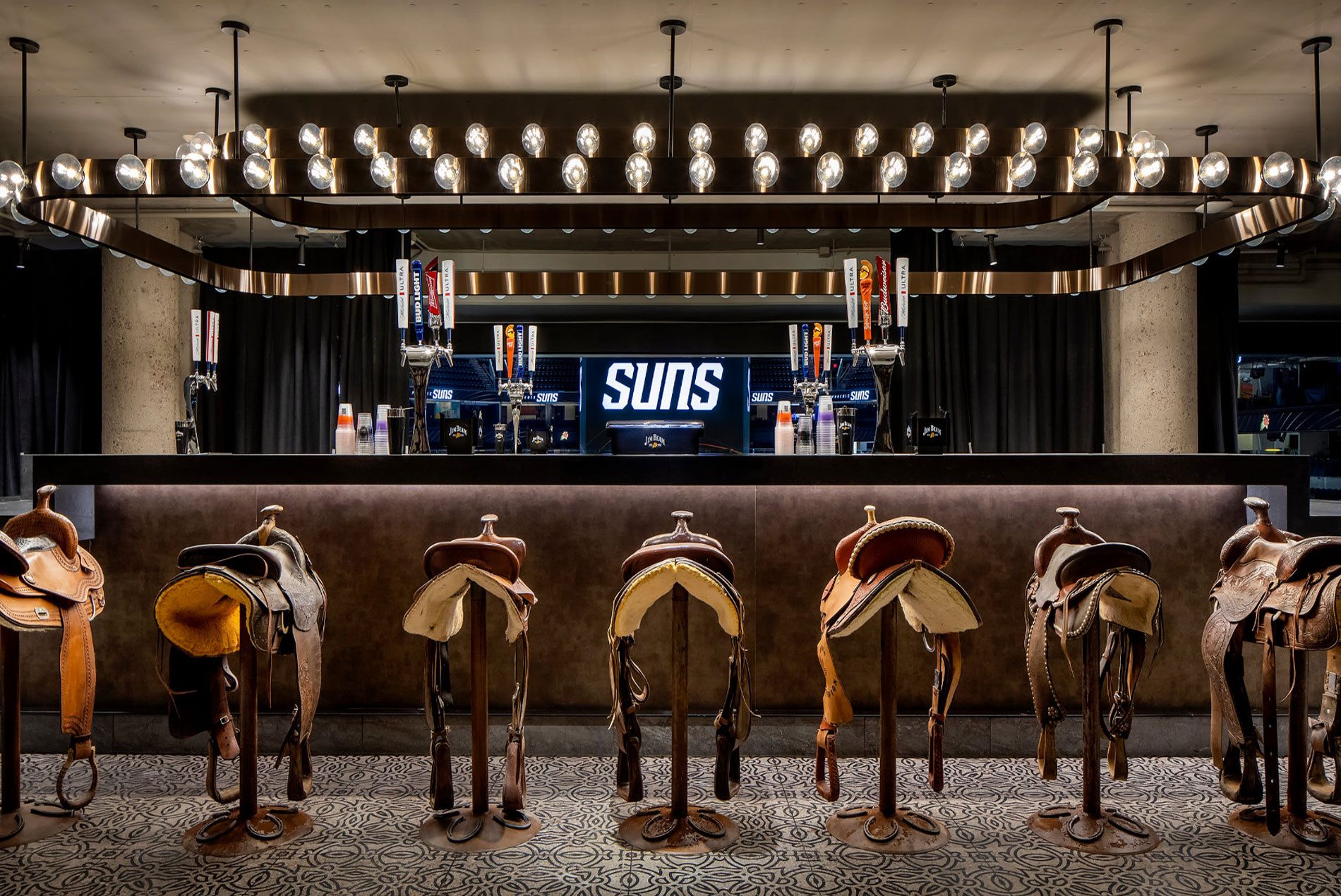
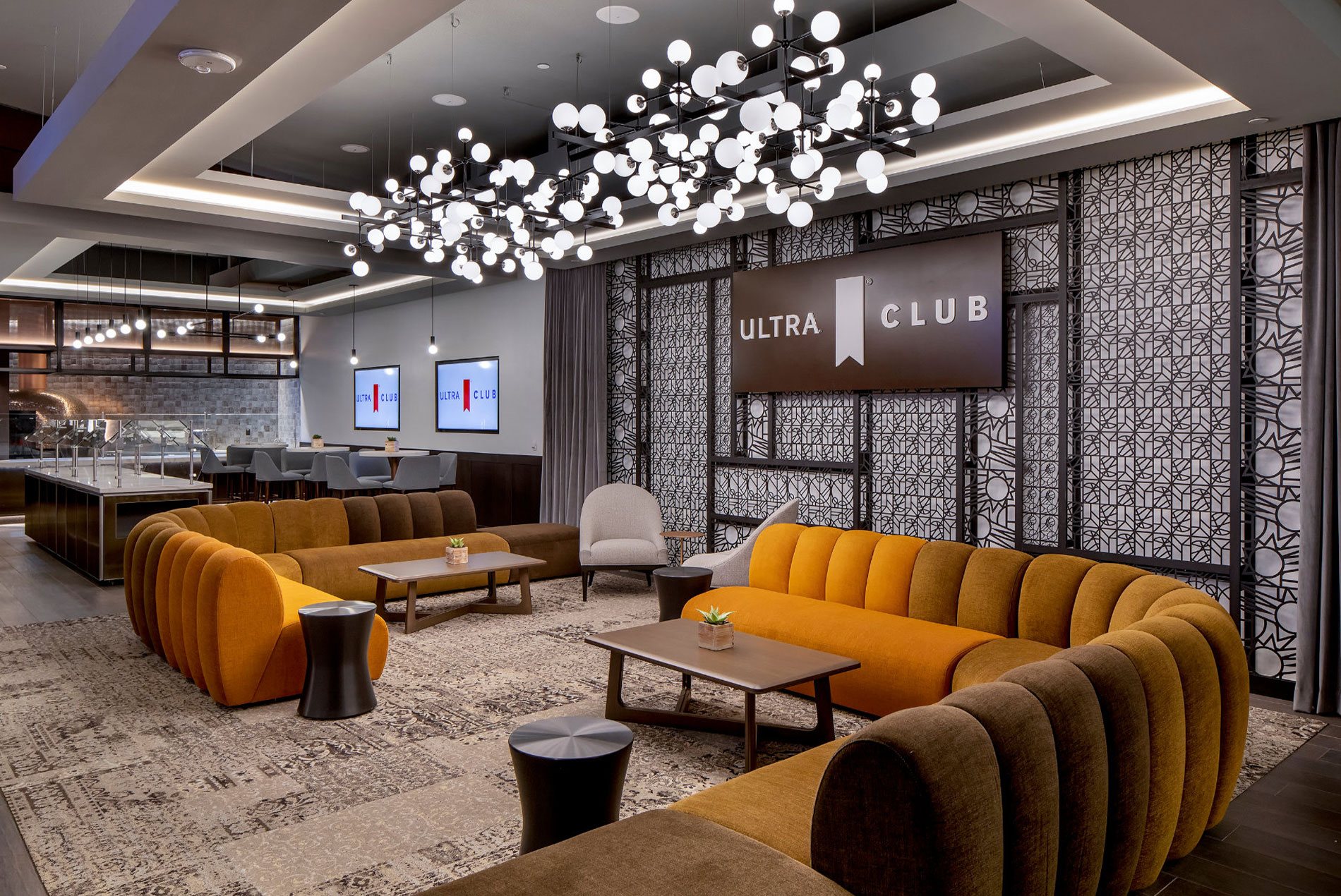
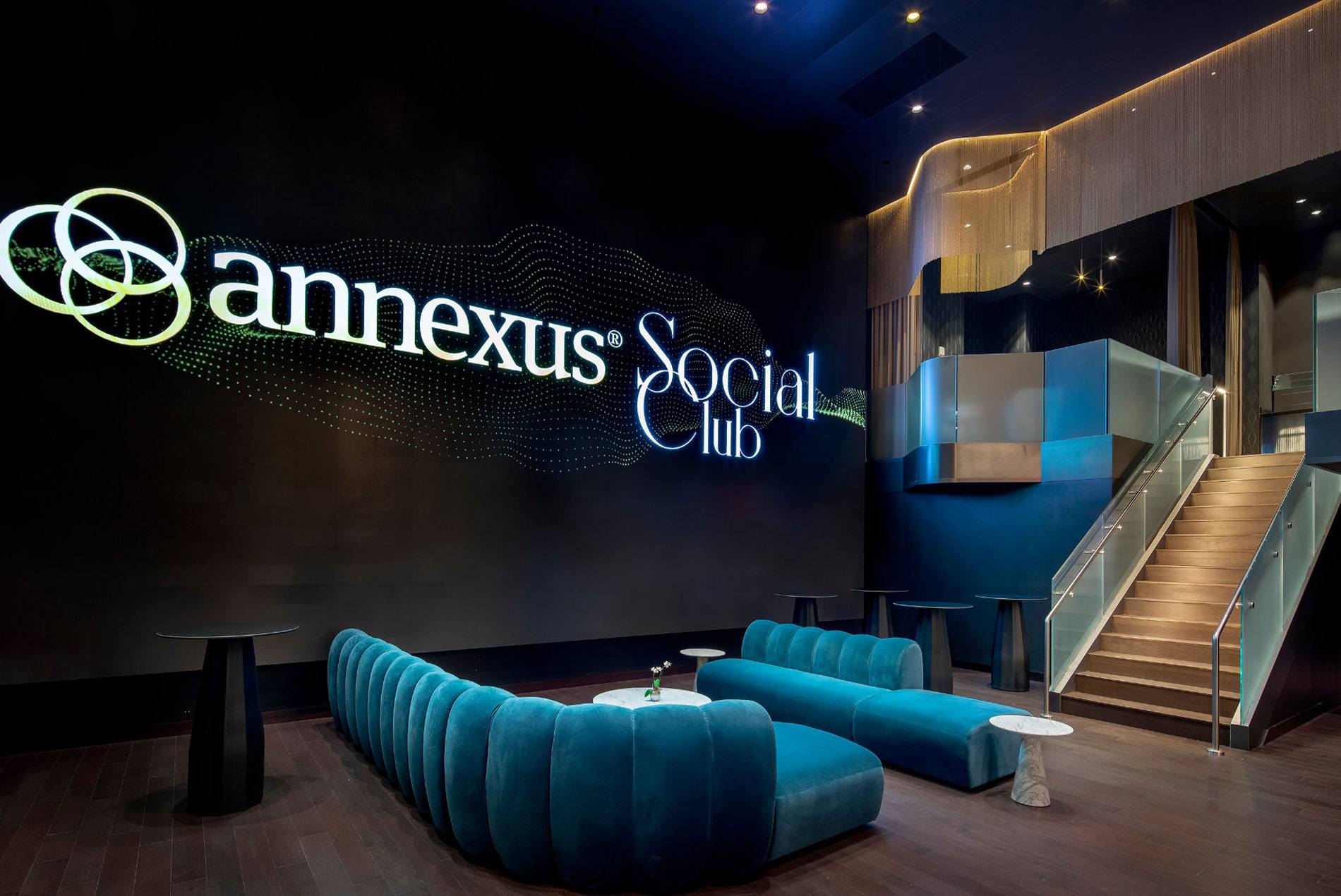
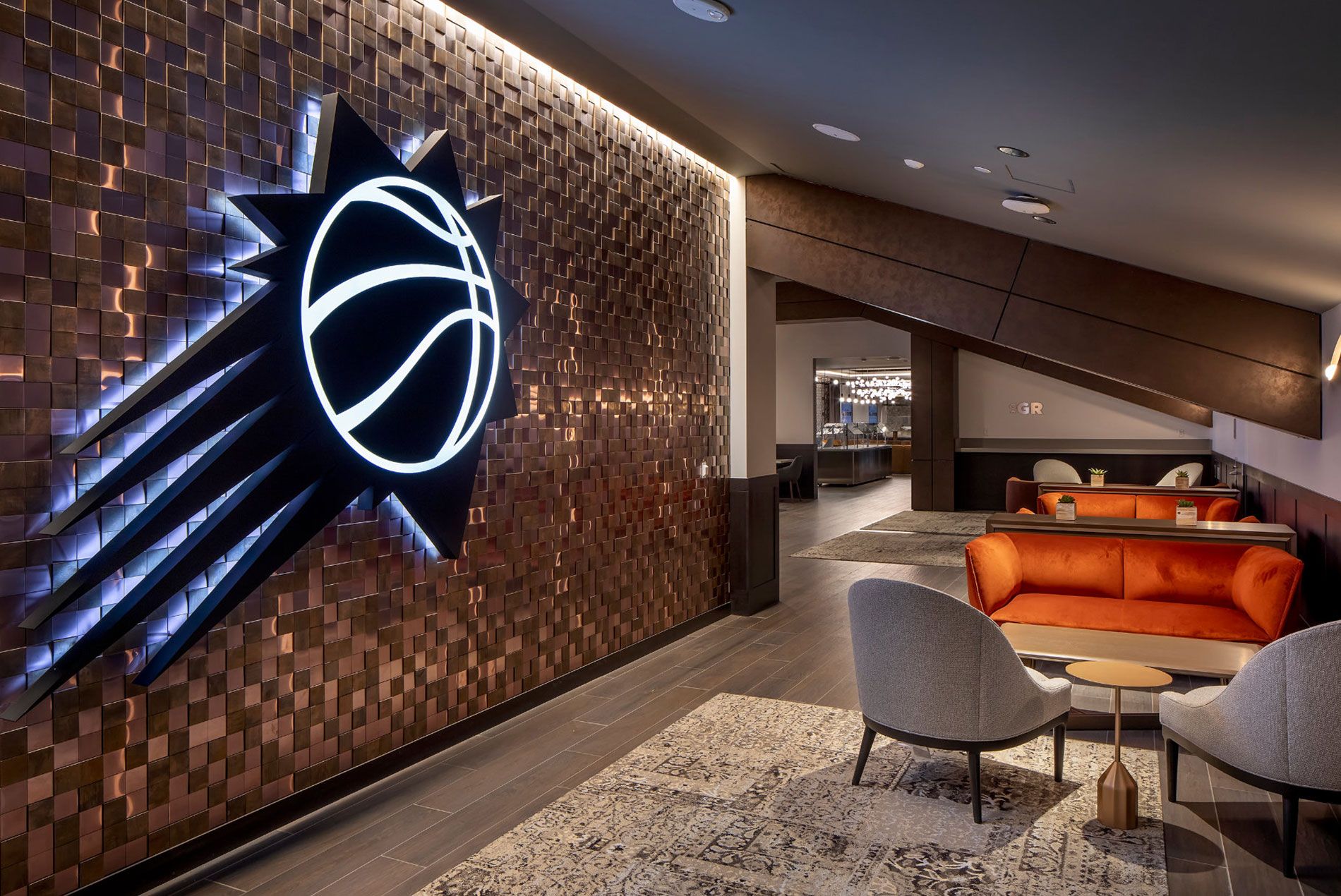
The design team reimagined dark back-of-house spaces on the east and west sidelines as 10,000 square feet of premium clubs.
High-end materials, textures and fixtures create a jewel-like space that doesn’t feel like it is underground. An expansive copper-tiled wall, neon Suns logo and statement lighting further brighten the space.
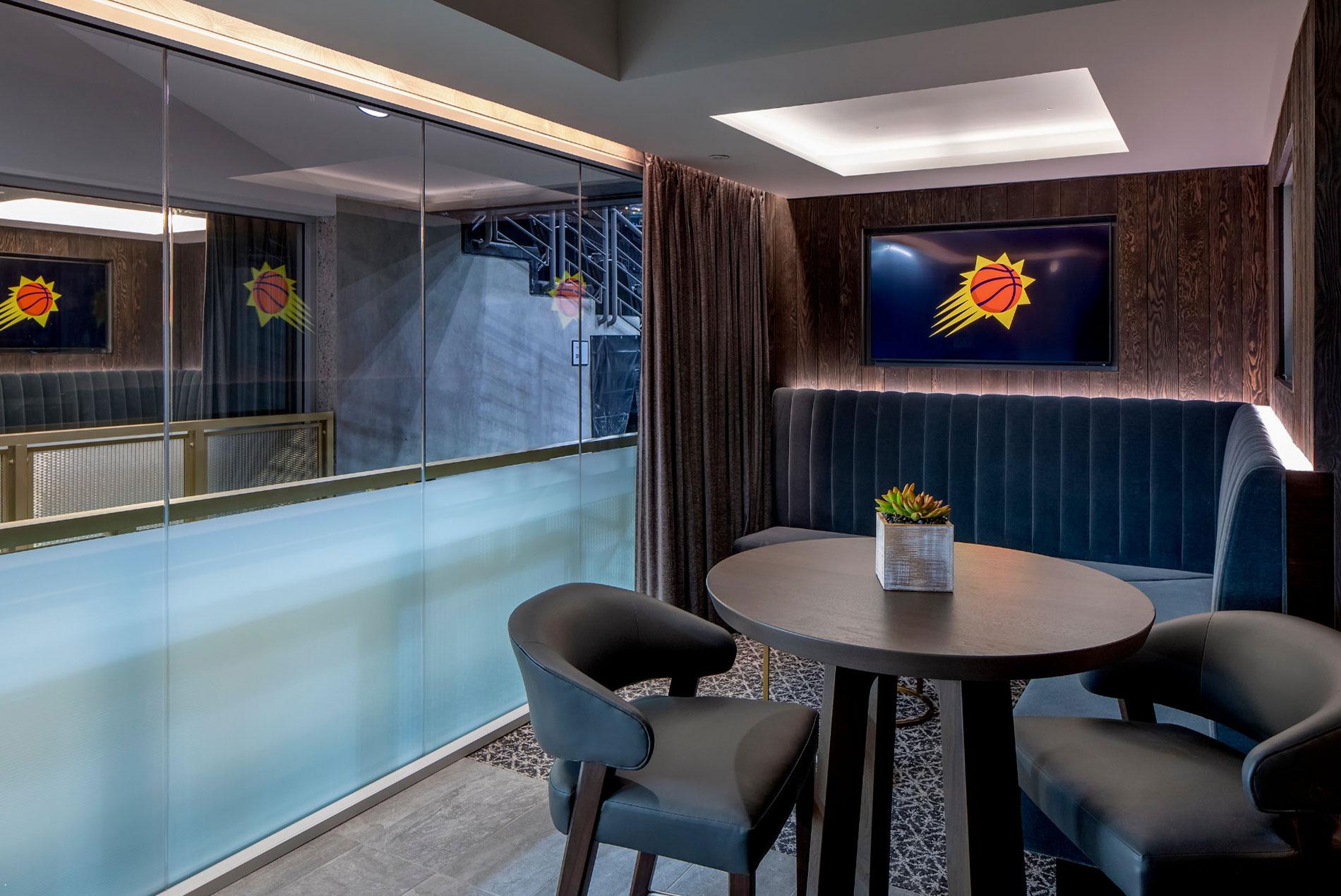
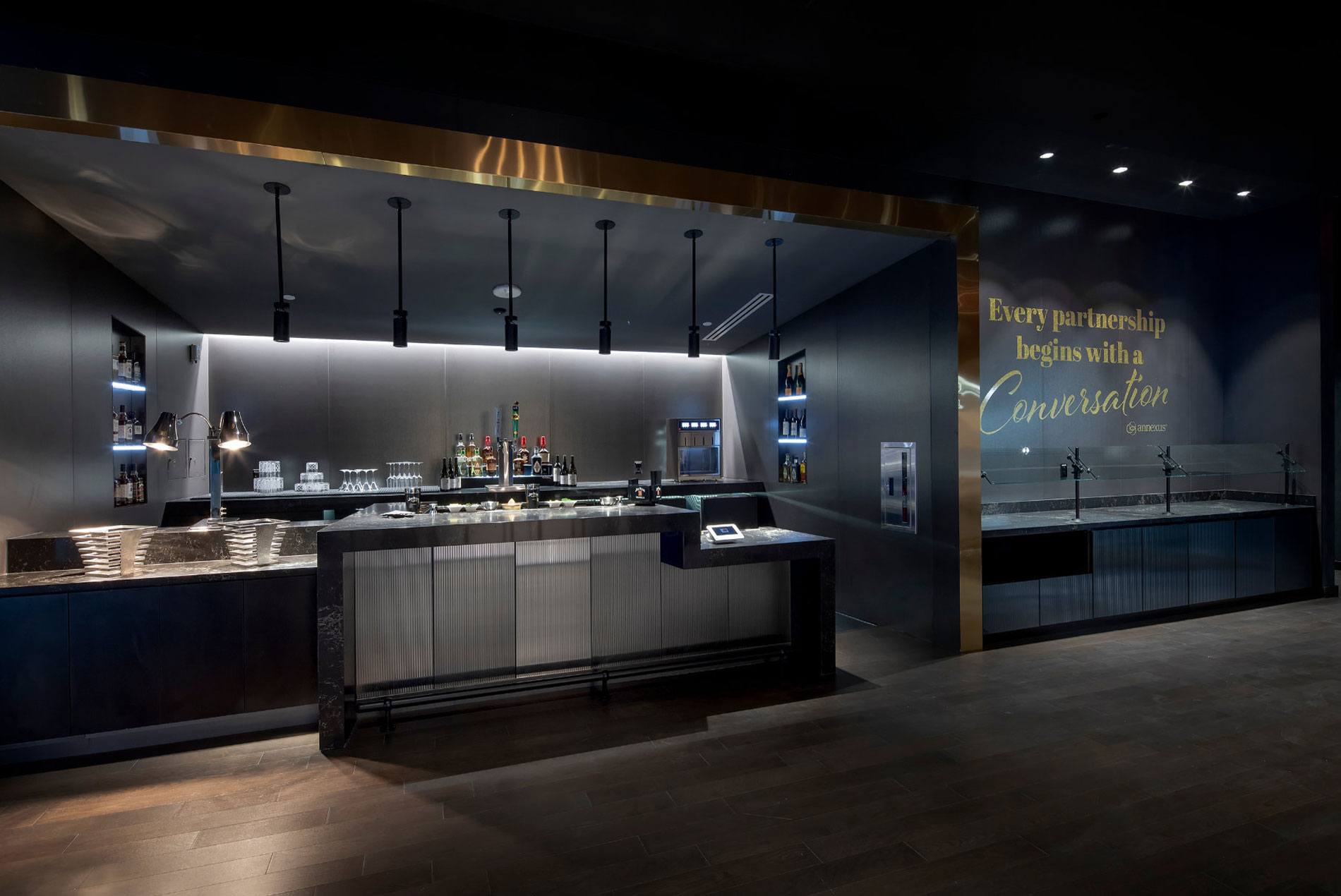
A new commissary allows for better quality and more diverse food and beverage offerings.
Inspired by local food trucks and Airstreams, a new food court on the upper concourse offers a casual, family-friendly environment.
As construction progressed during the pandemic, the design team considered how to provide a safe food and beverage experience. New grab-and-go markets and concession stands provide an array of choices and give fans autonomy.
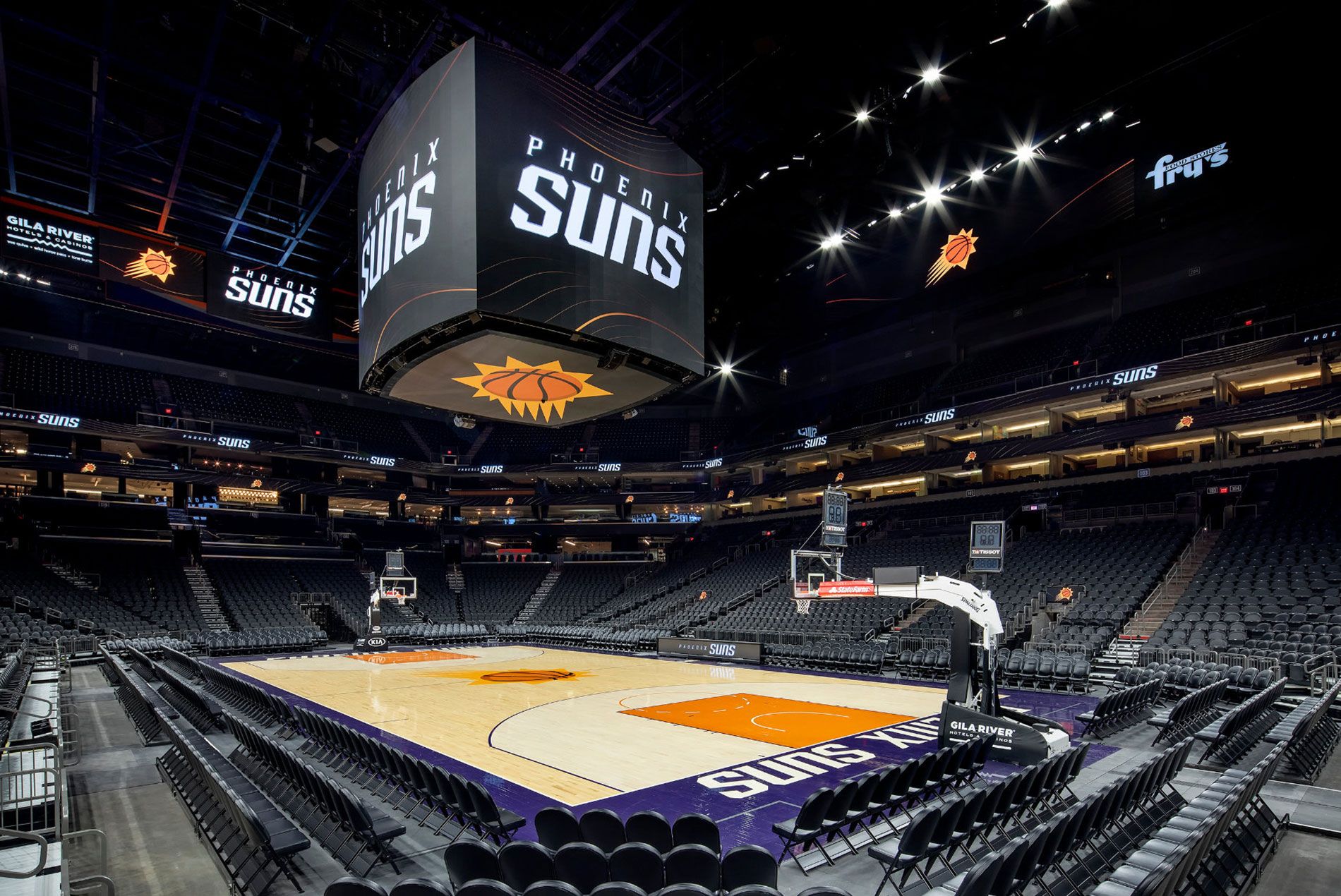
The arena’s transformation included major upgrades to the mechanical, plumbing, electrical and structural systems.
High-efficiency mechanical systems, air conditioning systems and LED lighting reduce the venue’s electrical energy consumption by 5.5 million kWh annually. This is roughly equivalent to the energy usage of 450 U.S. homes. These systems have eliminated 3,800 tons of annual carbon emissions, equating to approximately 4,700 acres of forest in annual carbon sequestration.
Low-flow fixtures and new plumbing systems reduce water consumption by more than one million gallons each year, or the equivalent of two Olympic swimming pools.
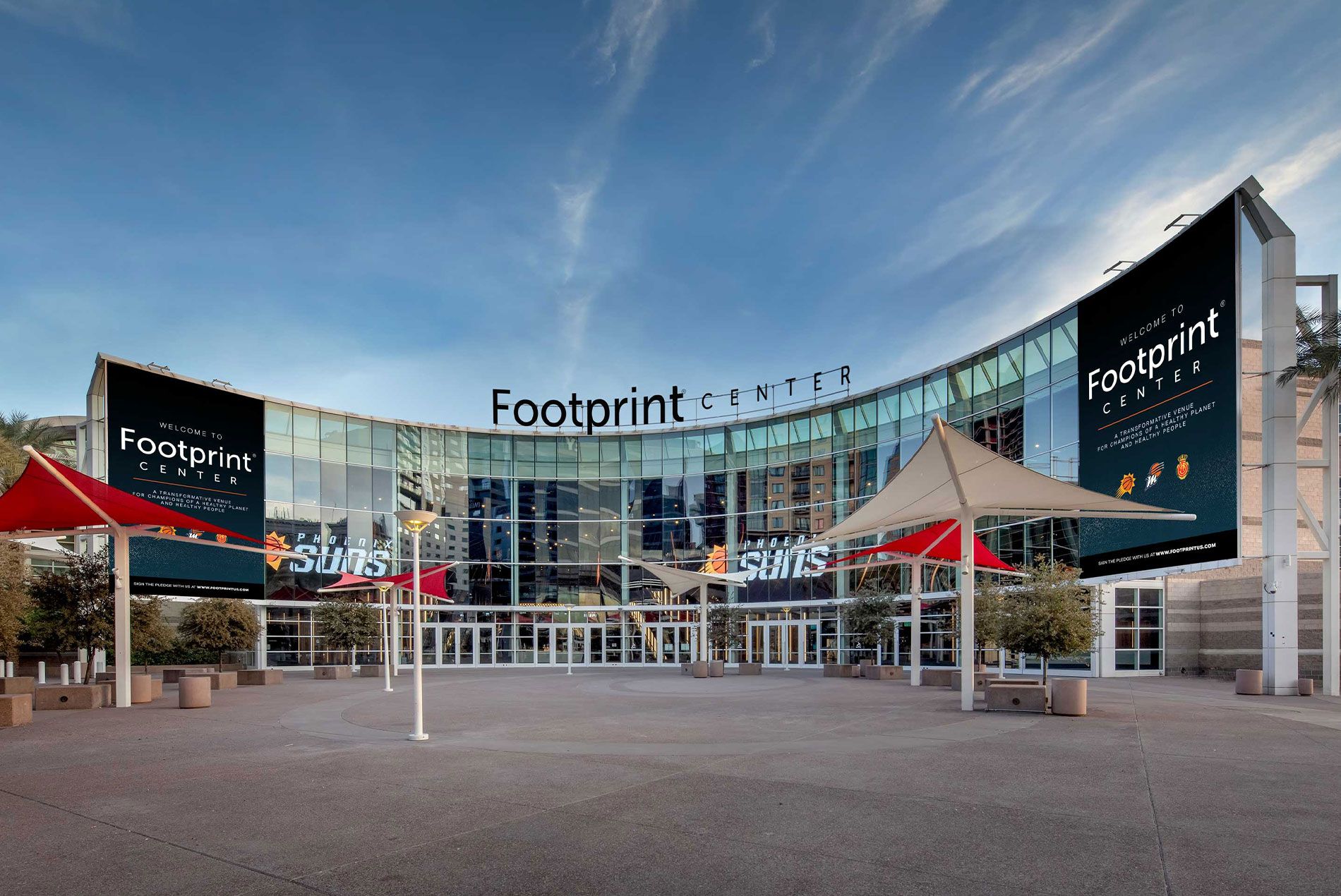
The Suns’ relationship with Footprint, a plant-based food packaging company, is helping to reduce the environmental impact of the arena. Footprint is advising the Suns on how to eliminate use of single-use plastic and move toward carbon neutrality.
Signage throughout the venue educates fans on simple, sustainable choices they can make each day. Footprint has long-term plans to use the arena as a living innovation lab for sustainability, potentially setting a new standard for green operations in the sports and entertainment industry.
